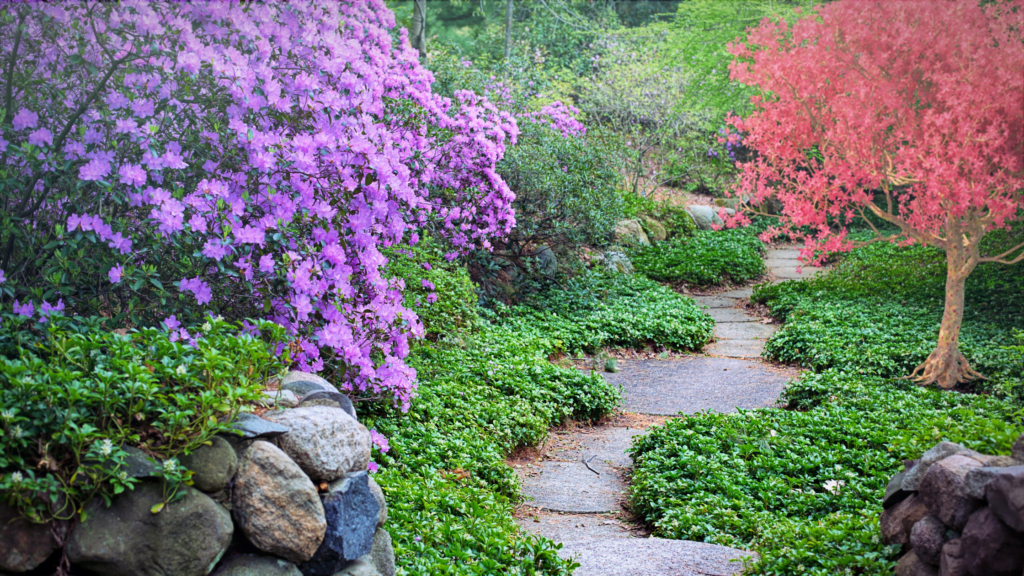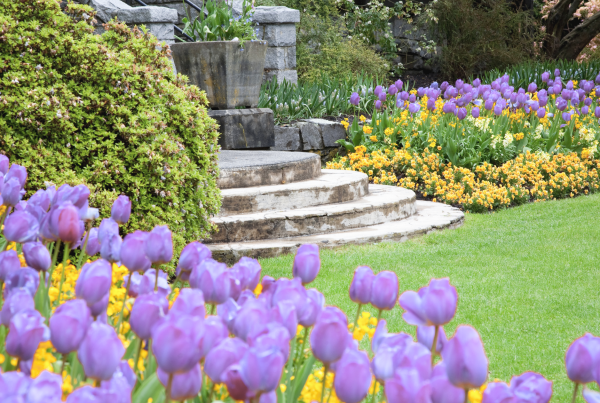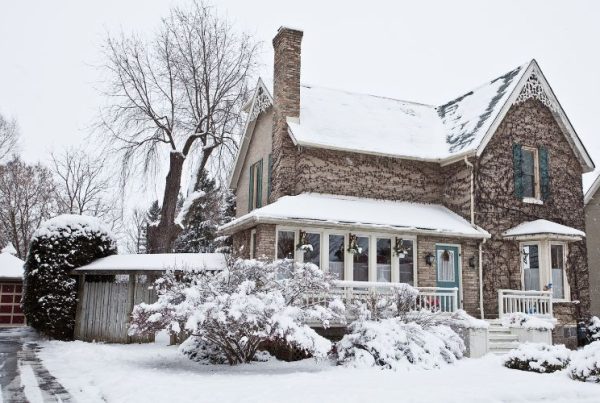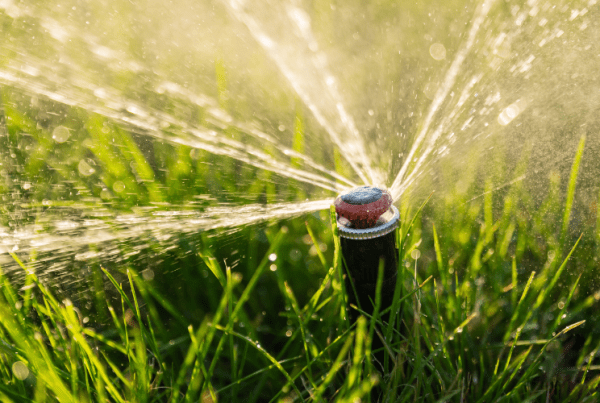It’s hard to overstate the value of trees and shrubs in landscaping. They cast shade that both humans and plantings appreciate in the hot summer months, add multi-tiered structure and texture to your landscape, and create borders for pathways, patios, pools, and other hardscaping features. The key to successfully growing trees and shrubs is to plant them at the right time of year so they can take root. So when is the best time to plant trees and shrubs? Though this may come as a surprise to Charlotte homeowners, fall and winter are some of the best times of year to plant trees and shrubs in North Carolina.
Why Fall and Winter Are Some of the Best Times to Plant Trees
When we think about planting, our minds often tilt toward spring—a fine time to work the earth and install all kinds of flowers and vegetables. But as far as woody shrubs and trees go, it’s really the fall-through-winter window for planting that’s best in Charlotte, at least in most cases. There are a number of reasons for this.
Trees Develop their Roots in Winter
A fall-planted tree or shrub can spend the winter fleshing out its root system ahead of the colder winter temperatures and the next growing season. Once spring comes around, you’ve got a plant with an already well-established network of roots for harvesting water and nutrients, which means it can concentrate most of its energy on new growth of shoots, leaves, and buds. Besides outpacing spring-planted counterparts from the get-go, trees and shrubs that have more fully defined root systems are also better prepared to deal with the hot weather of summer.
Winter Offers the Right Soil Conditions
Even while temperatures drop in winter, the soil will continue to stay warm. Come winter, the combination of warmer soil plus cooler air helps stimulate root growth. People think that trees won’t survive the colder winter months, however, trees go dormant in the winter and don’t require much extra care as they’ve slowed down their growth rate.
Conditions Trees Require Less Care in Winter
A fall-planted tree or shrub will generally require less watering and all-around less care, given it will be going dormant when the temperatures outside drop. That cooler weather, coupled with the plants’ slowed-down state, also means trees will usually suffer less extreme transplant shock and stress.
Other Planting Tips to Consider
At MetroGreenscape, we know that in addition to the time of year, there are other factors that impact whether your trees and shrubs will thrive. Factors like choosing the right species and varieties based on soil type and understanding how to properly care for newly planted shrubs and trees. Here are some other tips for successfully planting trees in fall or winter.
Test Your Soil
In late summer or early fall—if you haven’t already—get your soil tested. This gives you a picture of its pH level (that is, how acidic or basic it is) and the existing levels of essential nutrients. That’ll suggest what kind of trees and shrubs will prosper best on your site—and which additions you may want to add to your soil to support better growth.
Evaluate Drainage
Think, too, about what your property’s drainage is like. Are there areas where soils dry out quickly, or where they tend to stay waterlogged? You’ll want to select plants that can withstand drier or wetter conditions, respectively, for those zones, or pursue landscaping alterations such as retaining walls or swales to modify those conditions.
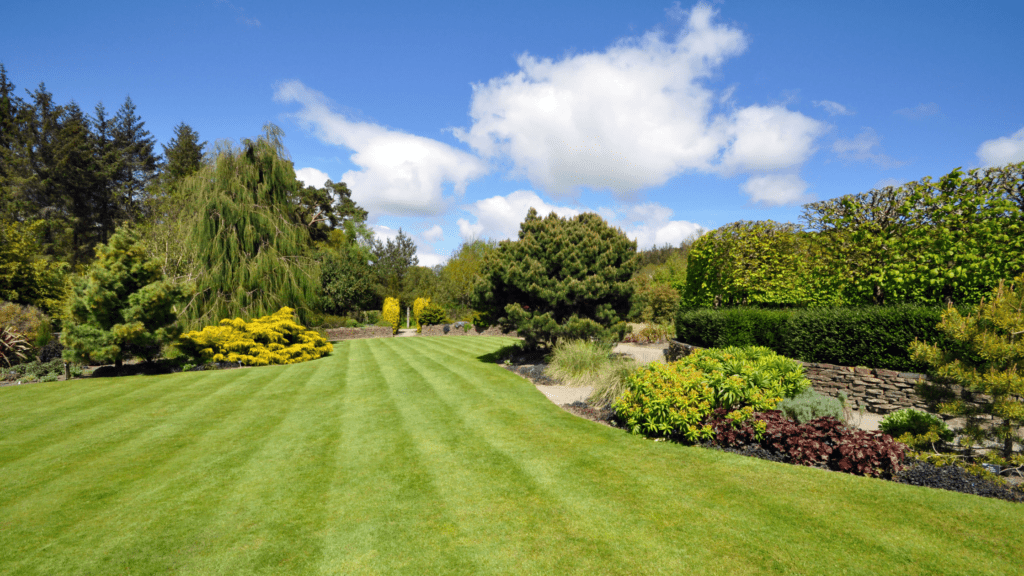
Chose a Good Location
Of course, whatever time of year you’re thinking of putting in a new tree or shrub, you’ve got to carefully consider whether it’s appropriate for your location. Think about how much water and sunlight the tree or shrub requires. Some plants need full sun, others deep shade; many do well with a mix of both.
Remember to check how large a tree or shrub you’re considering is likely to get, and plan accordingly. You want to avoid planting too close to a foundation, fence, or other structure that could ultimately be damaged by the plant’s roots. You also want to account for the sort of shade a tree will cast at maturity so it’ll integrate nicely with other plantings. Don’t forget about your sightlines, either. That cute little shrub visible from your kitchen window might end up blocking your view when full-grown!
Choosing the Right Variety of Trees & Shrubs
We’ve been covering a lot of the ultra-practical considerations for choosing trees or shrubs, but aesthetics definitely come into play, too. Think about what a certain plant will contribute to your yard-scape, and at what times of the year. We already talked about fall color; you might select other trees or shrubs for their spring flowers or their year-round evergreen reliability. Research the growth habit: Even in winter leaflessness, a tree or shrub with interesting branching patterns can add a fine visual element.
How to Protect Newly Planted Trees & Shrubs in Winter
We surely don’t have to tell you that Charlotte-area winter weather can throw all sorts of things our way—from long stretches of balmy pleasantness to fierce icy rain—and it’s important to protect those freshly planted trees and shrubs of yours from the worst of it. Here are some ways to protect newly planted trees in winter.
Utilize Natural Structures as Buffers
Of course, as we already mentioned, wisely situating your plantings can go a long way toward safeguarding them from weather extremes. Wind can exacerbate both cold damage and water loss. More vulnerable trees and shrubs can be tucked closer to buildings or other plantings, or, on a sloping property, planted on higher ground, on account cold air flows downhill and pools in low spots.
Give Trees and Shrubs Plenty of Water
Hardier trees and shrubs are less vulnerable to damage from cold temperatures outright but can suffer from wintertime desiccation when soil water’s limited due to frozen ground or a prolonged dry period. That’s especially true of evergreens, which can continue to lose water through their persistent foliage through the cold season. During droughts or ahead of a hard freeze, trees and shrubs need a good watering.
Add a Protective Layer
Adding a bit of extra mulch can also safeguard a new planting against water loss during the winter. You can also install protective wraps around young trees with thin bark or wrap them in burlap or landscaping cloth if they’re positioned where the winter sun could scorch them. Just remember to remove that wrapping in the spring.
The same goes for staking, which may be required for wobbly young trees or shrubs: Do so for the winter season, but remove the stakes come springtime.
Fertilize Properly
Be aware, too, that while certain soil amendments may be desirable for a fall planting, you generally want to avoid applying fertilizers that’ll deliver a quick hit of nitrogen with an evergreen species, as this can trigger tender new growth readily damaged by cold weather.
Consider Working with a Professional Landscaper
By now it should be apparent that, in addition to planting trees in fall, there’s quite a bit of calculation that goes into where to plant them, how to position them, and how to protect them until spring arrives—not to mention maintaining them from there on out. A reputable landscaping company in Charlotte can maximize your chances for achieving the landscape you want and help you fill your yard with the plants likely to survive—and thrive—for the long haul.
When it comes to selecting, planting, and caring for trees and shrubs—and all other elements of both your soft- and hardscaping—the team here at MetroGreenscape has your back. With decades of experience and the exhaustive knowledge of Charlotte-area landscaping that comes from being a truly local company, we know the plants that prosper best in our soils and climate, and how to best use them to create the outdoor space you imagine in your mind’s eye.
Get in touch with us for a consultation, and we’ll look forward to helping you plant just the right trees and shrubs to usher that dream landscape of yours into a stunning reality!

